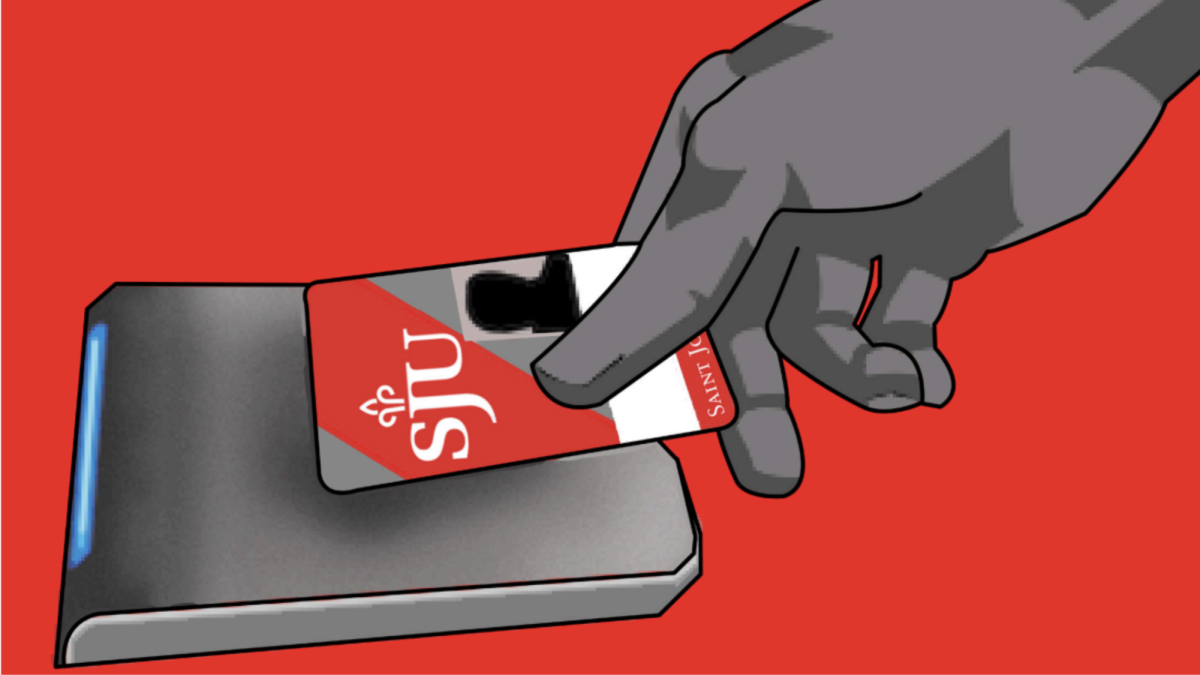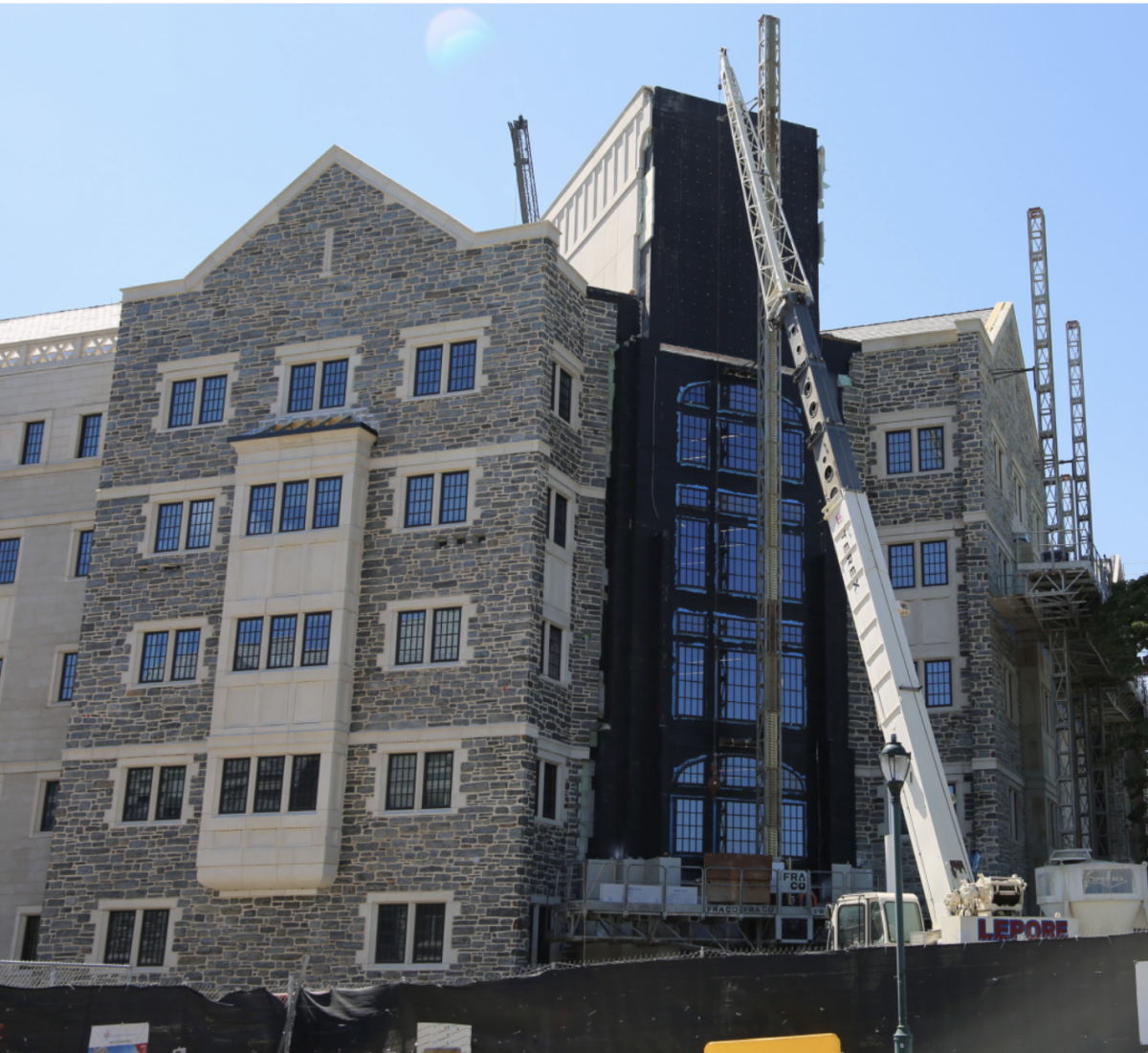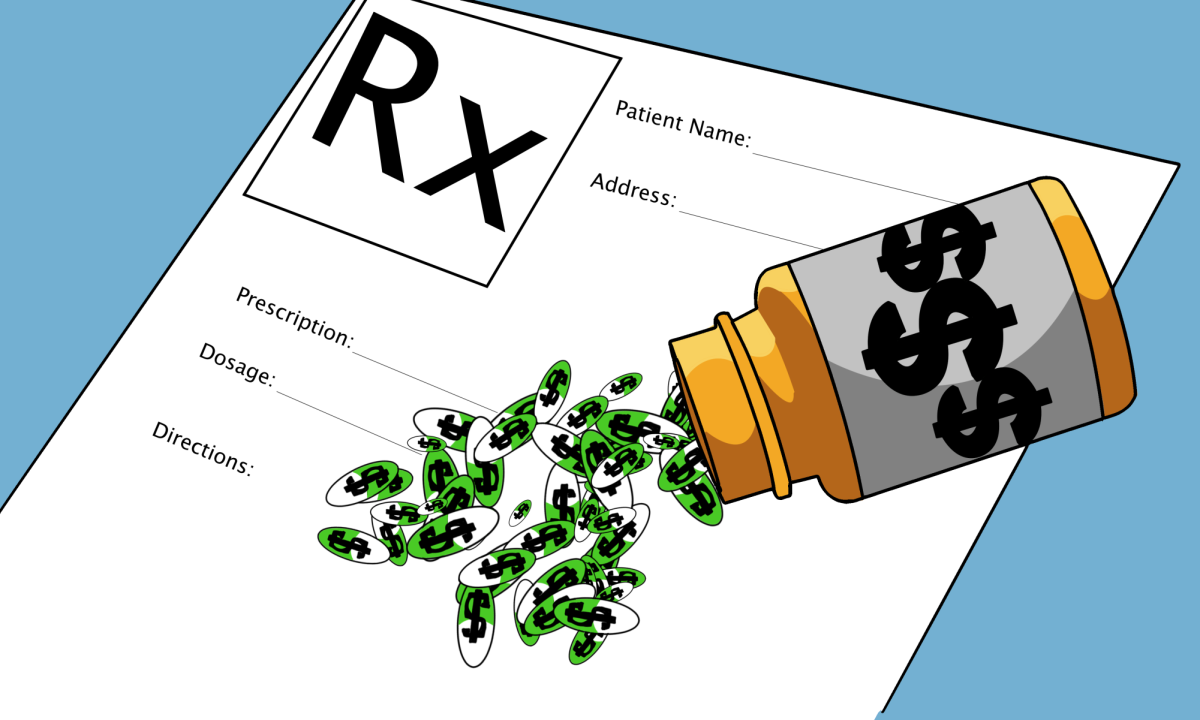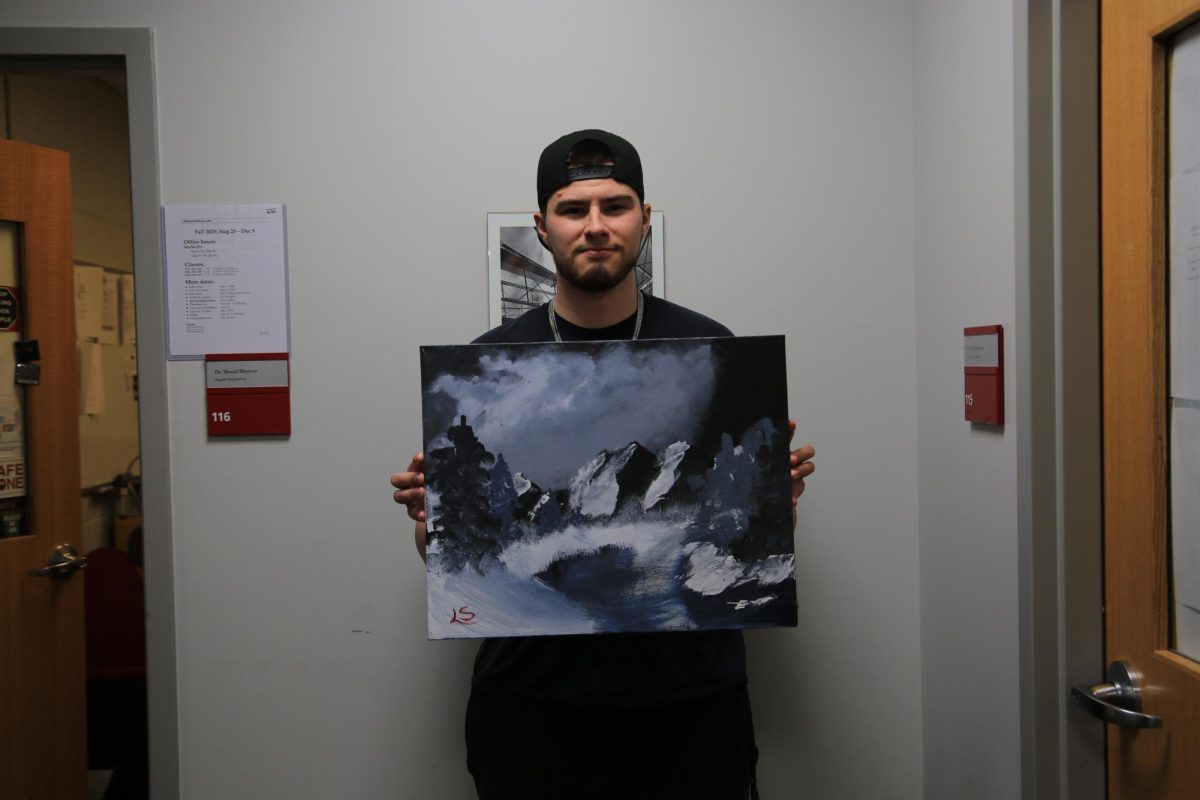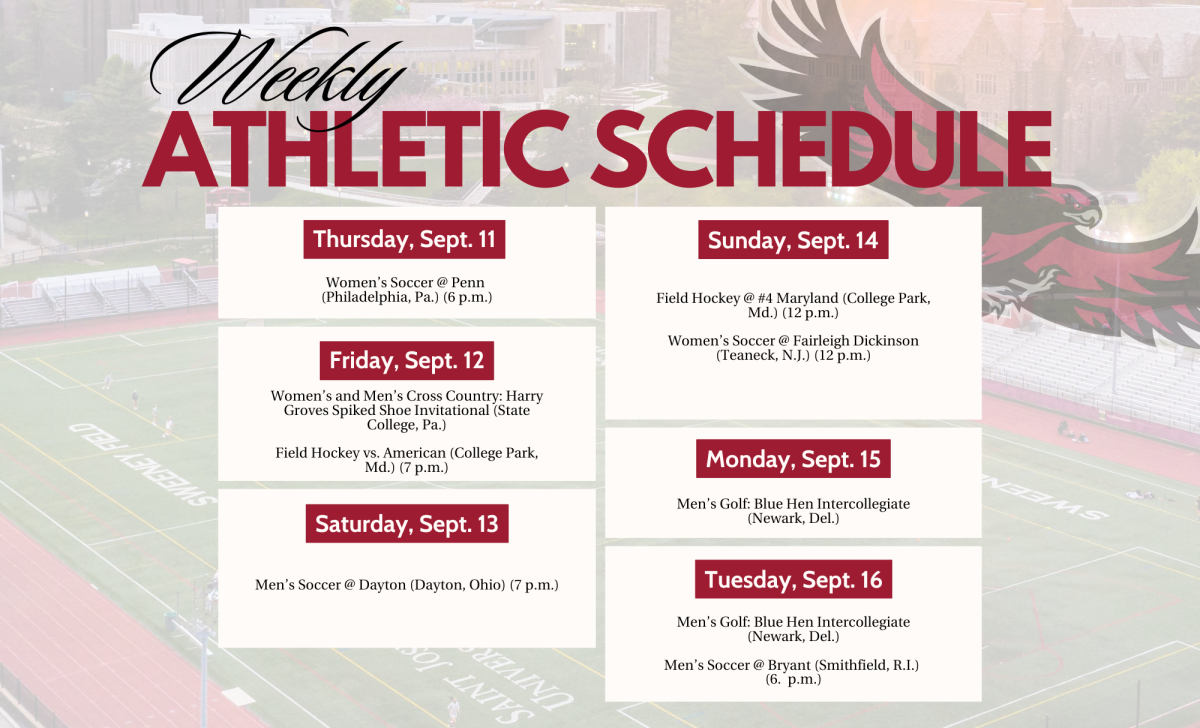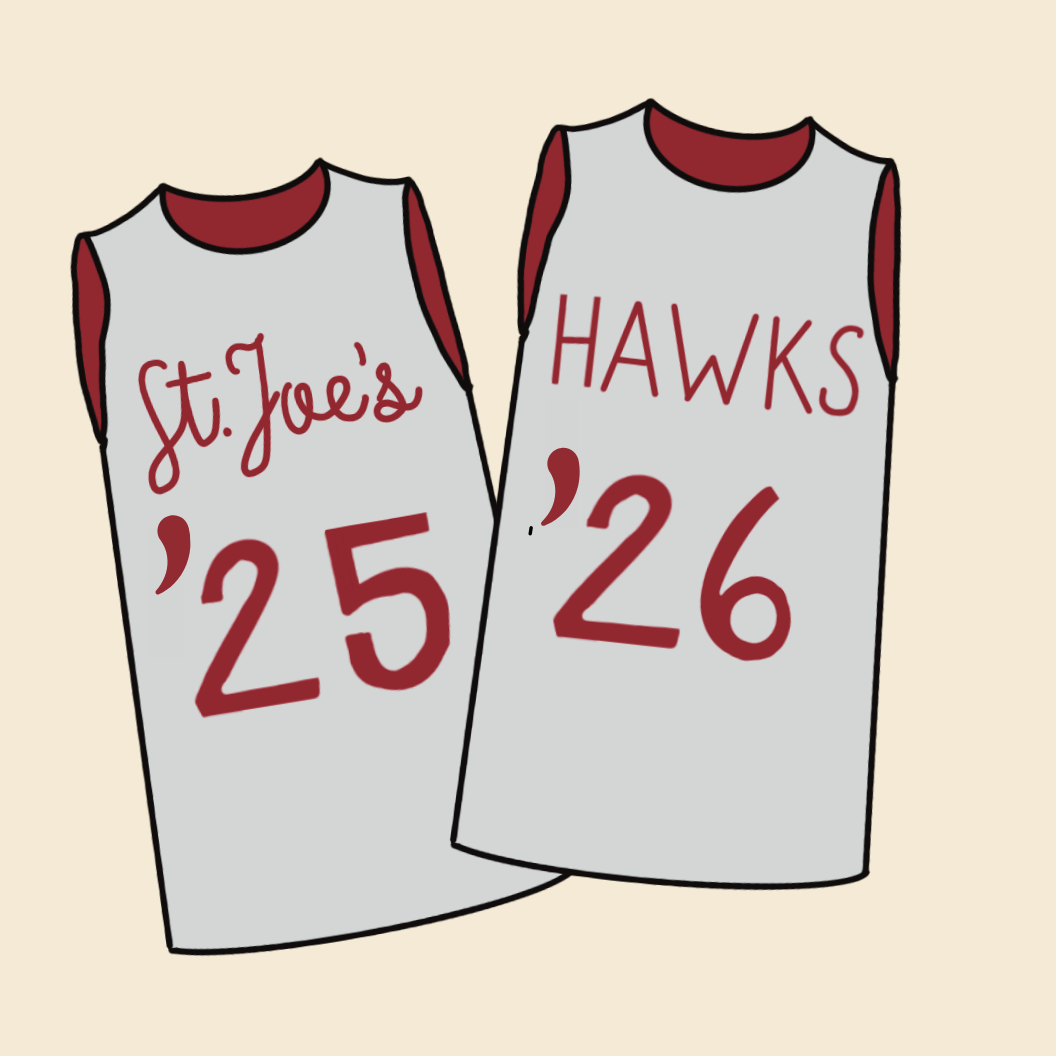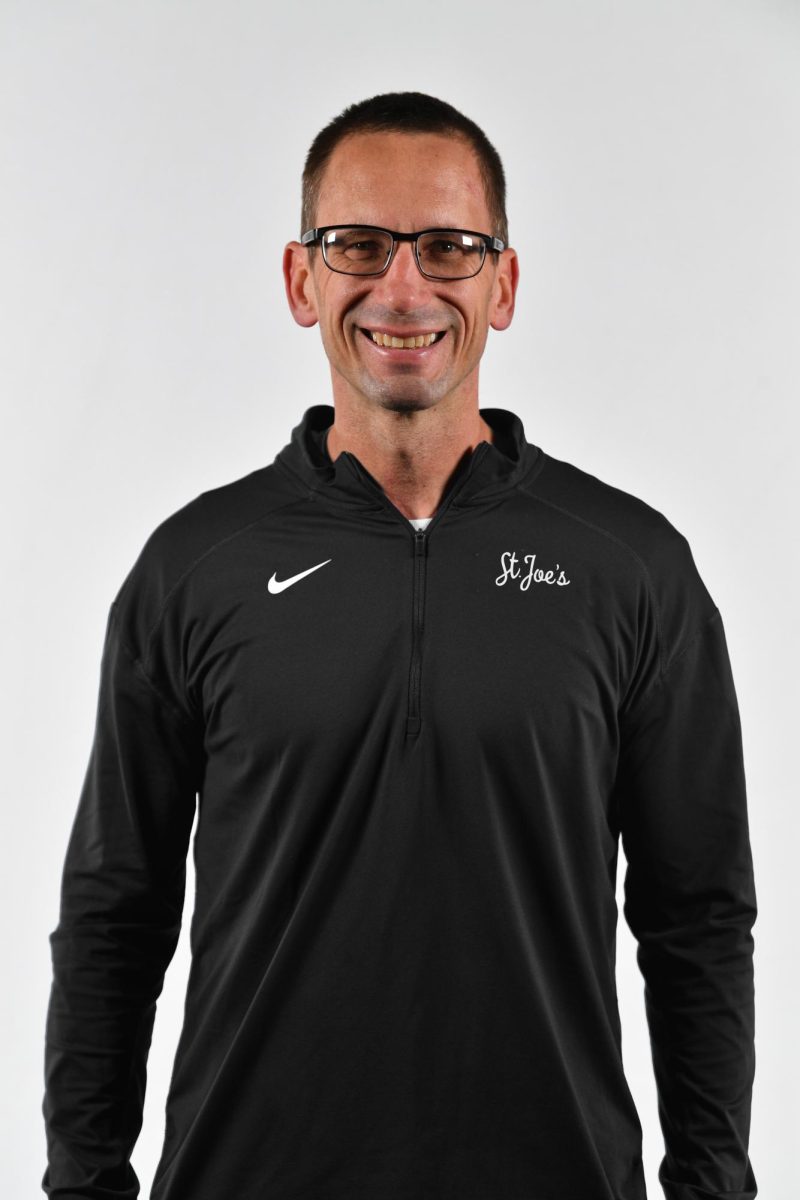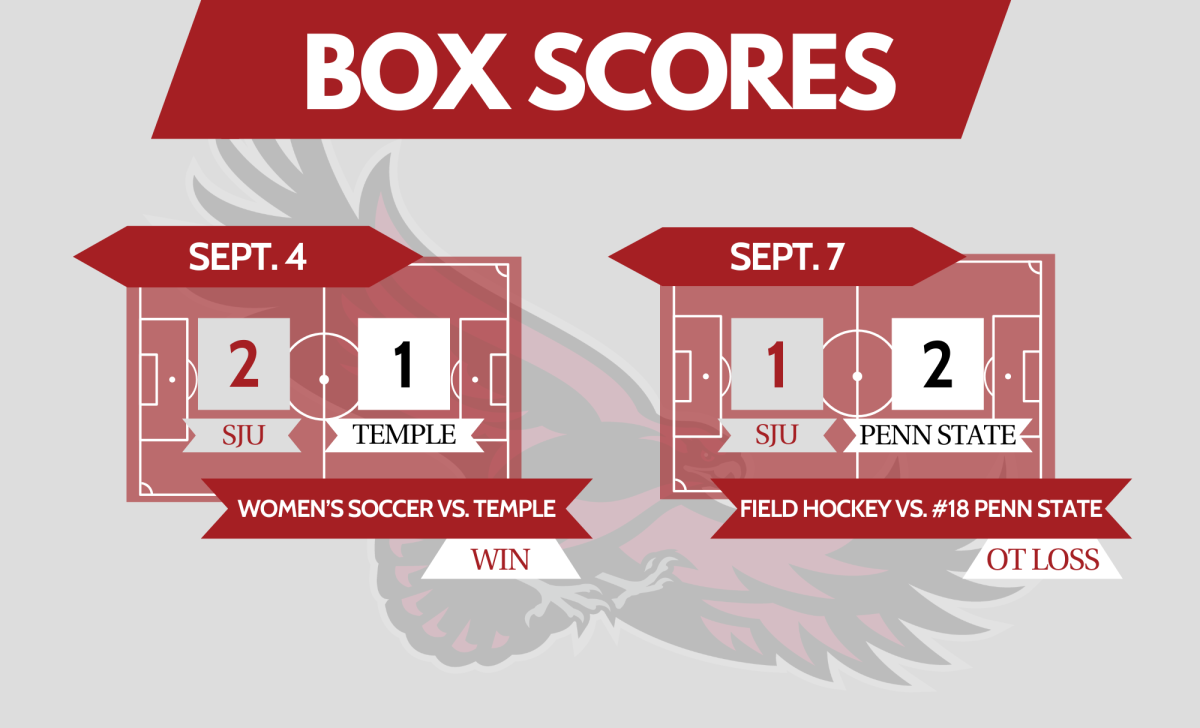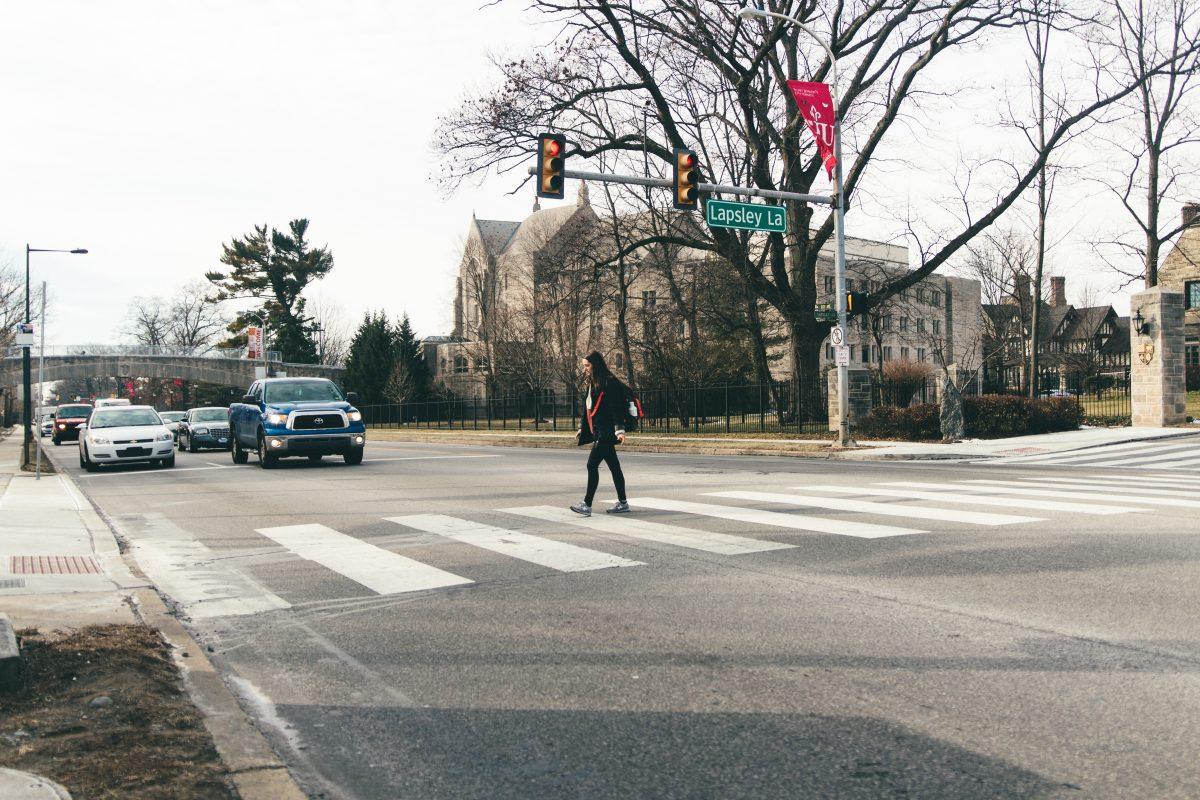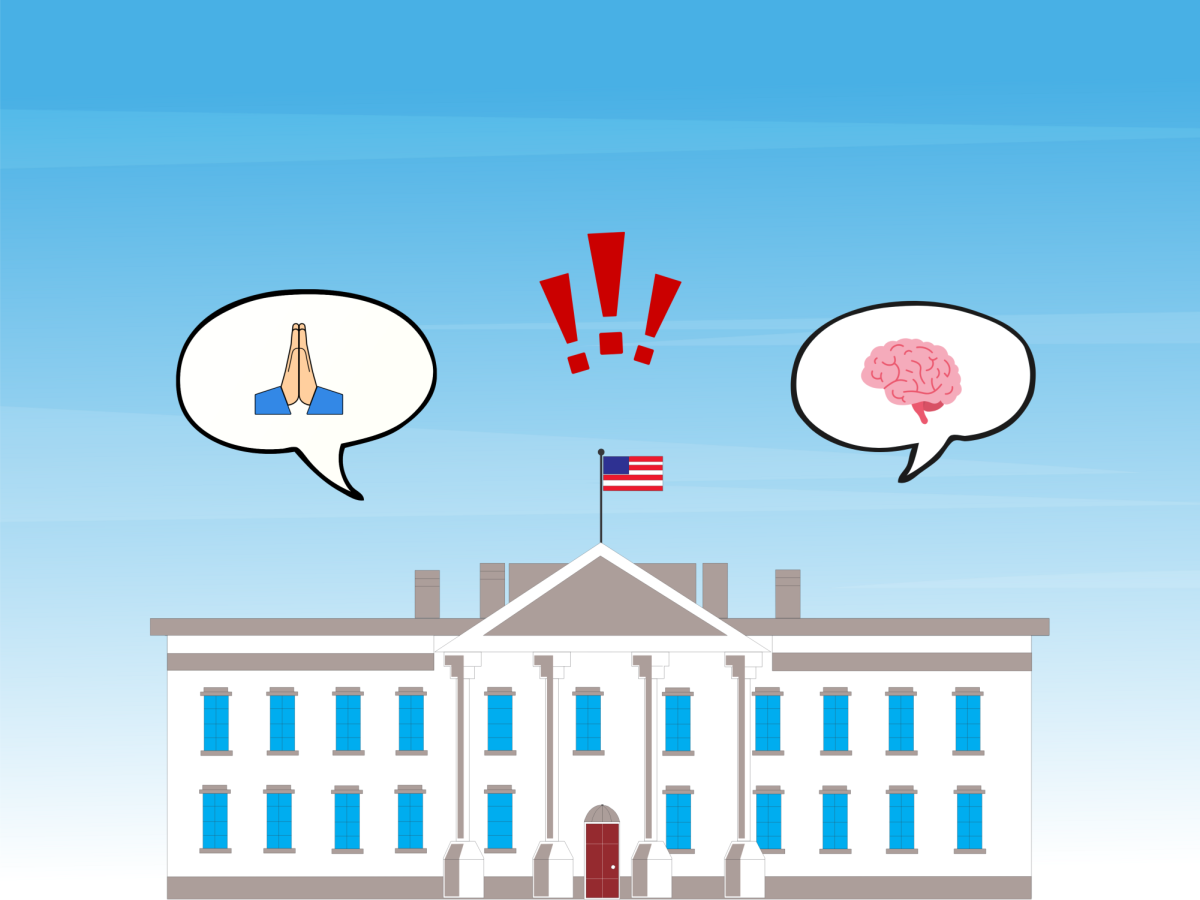What we can do to make our campus safer
In light of recent traffic accidents involving St. Joe’s students, the university sent an email about pedestrian safety to students, faculty and staff from Arthur Grover, director of Public Safety and Security on Jan. 19. The email reminded students to use caution while traveling across campus as pedestrians.
City Avenue is a high-traffic state road, and because it splits our campus, thousands of students cross it in waves every 50 minutes or every hour and 15 minutes. The Hawk reported in February 2017 that “seven reported accidents between pedestrians and moving vehicles have occurred at Saint Joseph’s University between January 2015 and February 2017.” St. Joe’s students were involved in six of the seven accidents.
The City Ave Special Services District, in cooperation with the Pennsylvania Department of Transportation and the Delaware Valley Regional Planning Commission, initiated and completed the first phase of a two-phase plan between Aug. 2016 and June 2017 “to more efficiently accommodate traffic flow and pedestrians” and later was updated to include improved safety measures. These improvements should make a difference, according to the recommendations of several traffic studies completed to guide the improvements.
However, none of these entities are directly concerned with the safety of student pedestrians at St. Joe’s. The university and its community are the only actors directly and primarily concerned with our safety. So we need to advocate for ourselves.
The McShain Bridge, the only alternative pedestrian crossing, was constructed in 1988 thanks to the dedication of Nicholas S. Rashford, S.J., former president of the university. Realizing the necessity of a safe pedestrian crossing, Rashford joined the Delaware River Port Authority to facilitate the construction of the bridge despite the bureaucratic challenges facing the project.
Although the bridge does provide the university community with a safe crossing, there are other ways to improve our safety on campus, and the University has a responsibility to work for these improvements via the appropriate channels. The University’s Office of Government and Community relations, as well as relevant members of Student Senate and the administration, are specifically tasked with working with government leaders and our representative to advocate for our campus and our community’s best interests.
One way the University could try to amend the situation is to ask both the Philadelphia and Lower Merion Police departments to more regularly monitor City Avenue for speeding. Although research on the topic is not unanimous, more regular police presence should at least be an option to explore, even to the chagrin of student drivers.
Another step the University should consider, if it hasn’t already, is to request the relevant findings on pedestrian safety from the traffic studies completed for the City Ave Special Services District’s City Avenue improvement plan. If necessary, the University could look into conducting its own study.
After receiving the university’s email, students may have realized some of the poor pedestrian behavior practiced by their classmates—crossing outside of a crosswalk, crossing on a yellow light, and walking with our heads looking down at our phones are likely among the most common dangerous behaviors. Often, pedestrian-involved traffic accidents are caused at least in part due to wrongdoing by or distraction of pedestrians.
It goes without saying that as drivers, we, more than any of the thousands of drivers who regularly use City Avenue and other streets around campus, should exercise the utmost caution out of concern for our fellow campus community. But pedestrians, including us as students, need to use best practices, like the reminders emailed to students by the University, to keep ourselves and others safe.
However reasonable and appropriate the university’s safety reminders, they are also just the most immediate and easy ways to increase pedestrian safety on our campus. The reminders are just the beginning of the options both the university and students can pursue to ensure the safety of our campus.
Many students on our Hawk staff confessed that they don’t feel completely safe while travelling on campus, and nor should they. Part of why we don’t feel safe is because the roads around our campus, particularly City Avenue, aren’t very safe.
The Hawk staff noted such problems as the lack of speed limit signs on City Avenue, especially on or when approaching campus, drivers who fail to yield to pedestrians on 54th Street and Cardinal Avenue, and drivers who have difficulty seeing the traffic signal at Lapsley Lane when approaching from 54th Street.
There are plenty of ways to make our roads safer for pedestrians. One way for student to take action is to use the forms available on PennDOT’s website to report concerns about state roads or request new signage or repairs to existing road signs and signals.
Request new speed limit signs to make up for the lack of signs near campus on City Ave. Speed limit sides, though, are just the beginning, albeit an important first step.
We can also request the installation of radar speed signs. Some studies have found that radar speed signs do make a modest difference in reducing overall traffic speed.
Finally, we have to contact our campus’ state representatives, Rep. Mary Jo Daley on the Lower Merion side and Rep. Morgan Cephas on the Philadelphia side. It is their job as our representation in state government to act as intermediaries between our campus and PennDOT.
St. Joe’s students are 8,000-strong. Each of us can make a difference as individuals, but we’re far more powerful as a united front. Our campus will never be completely immune from traffic accidents, and we’re not guaranteed to get the change or result we want, but it’s always worth it to try.
—The Hawk Staff


